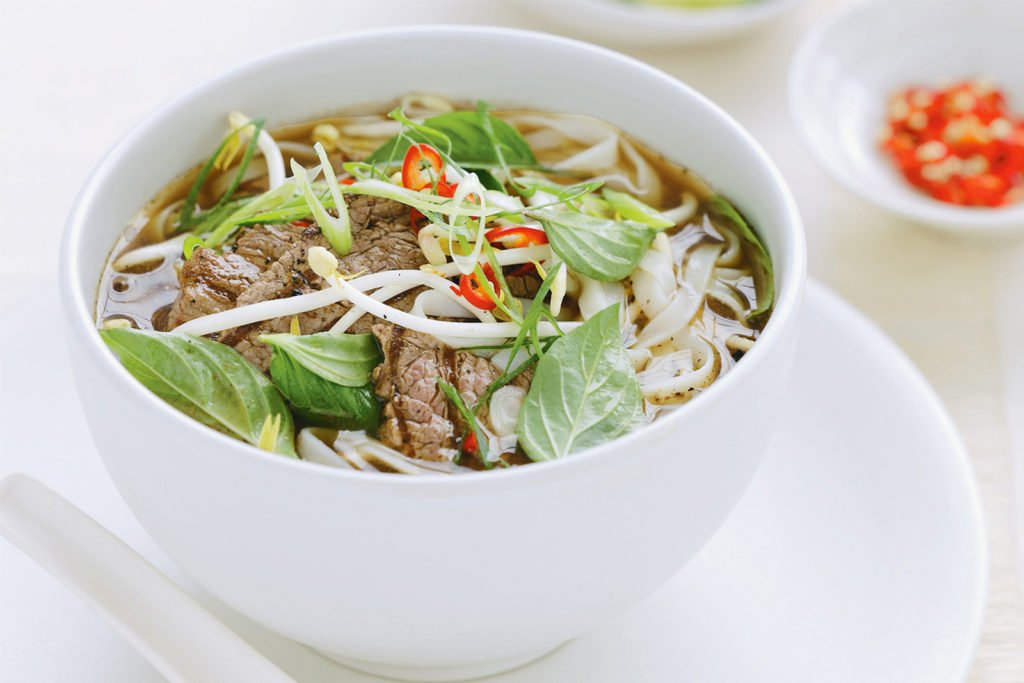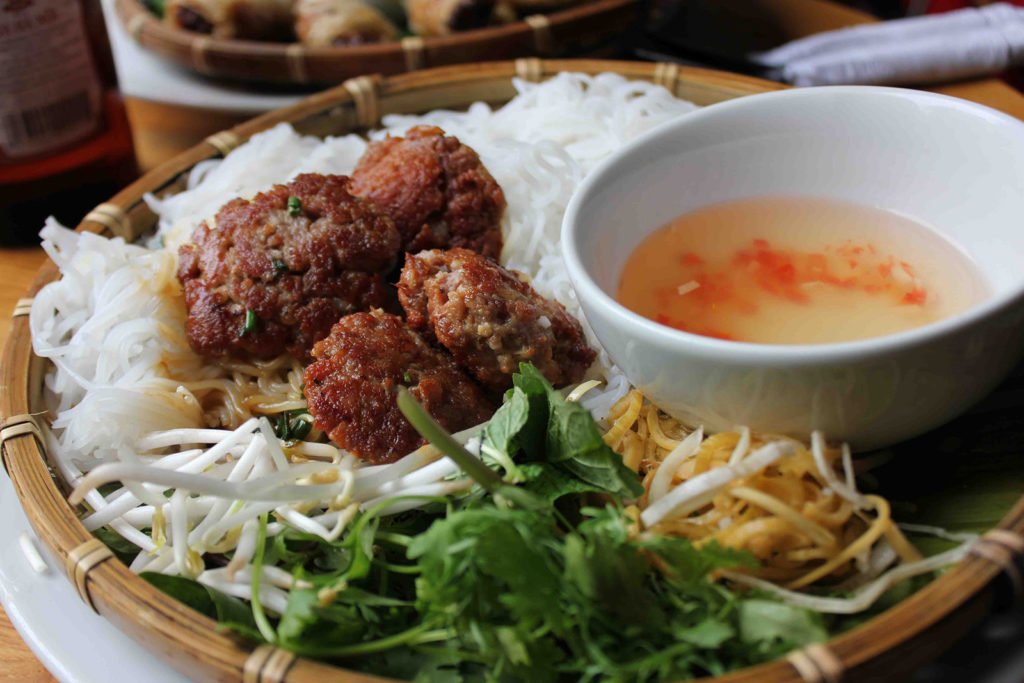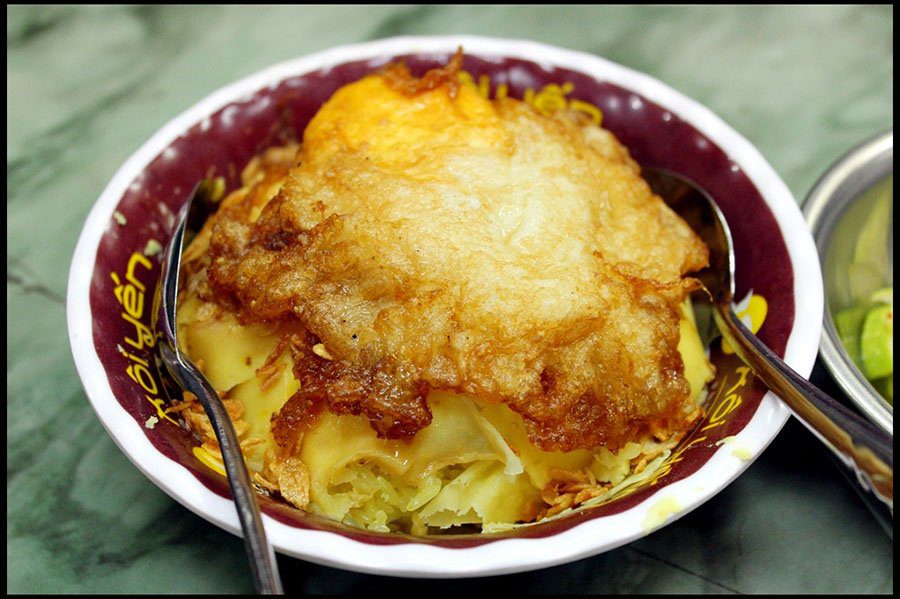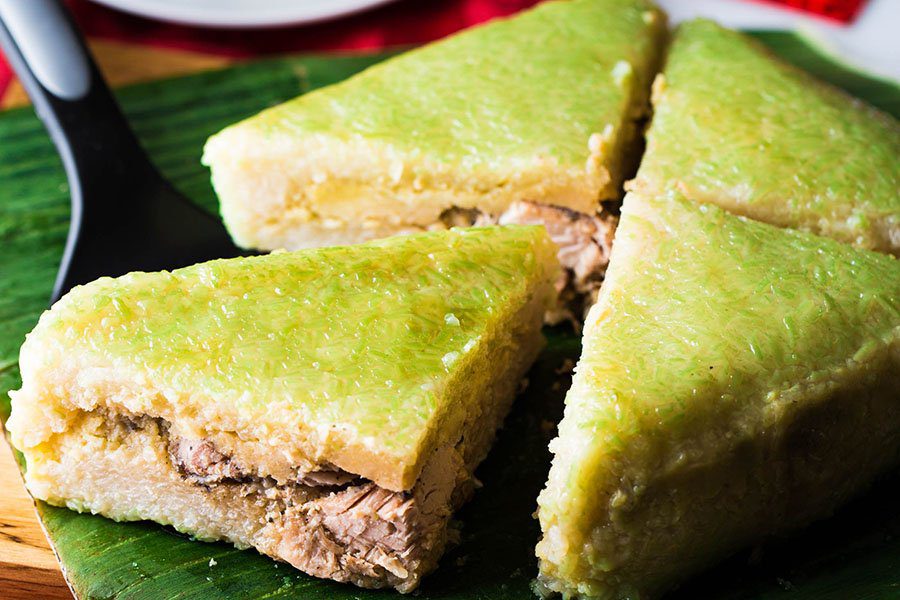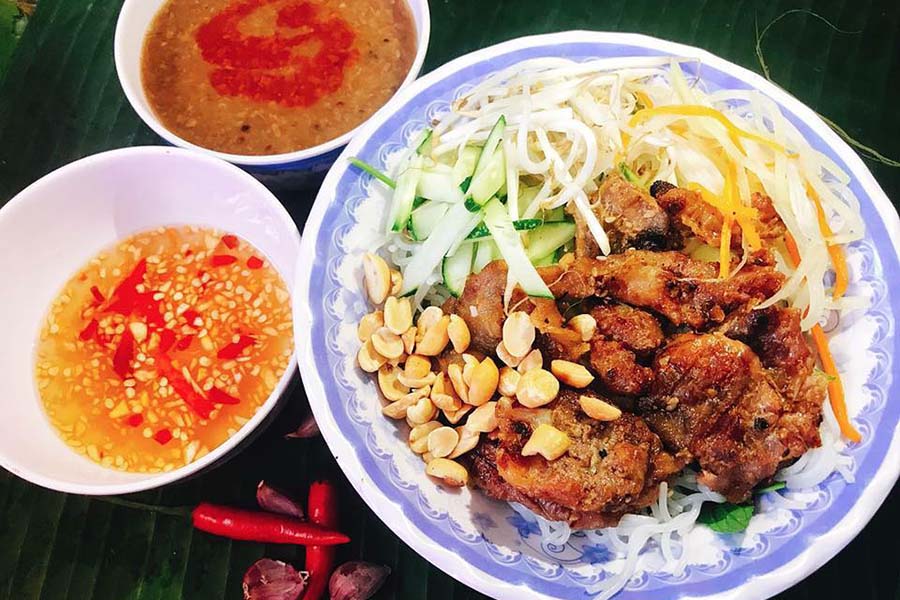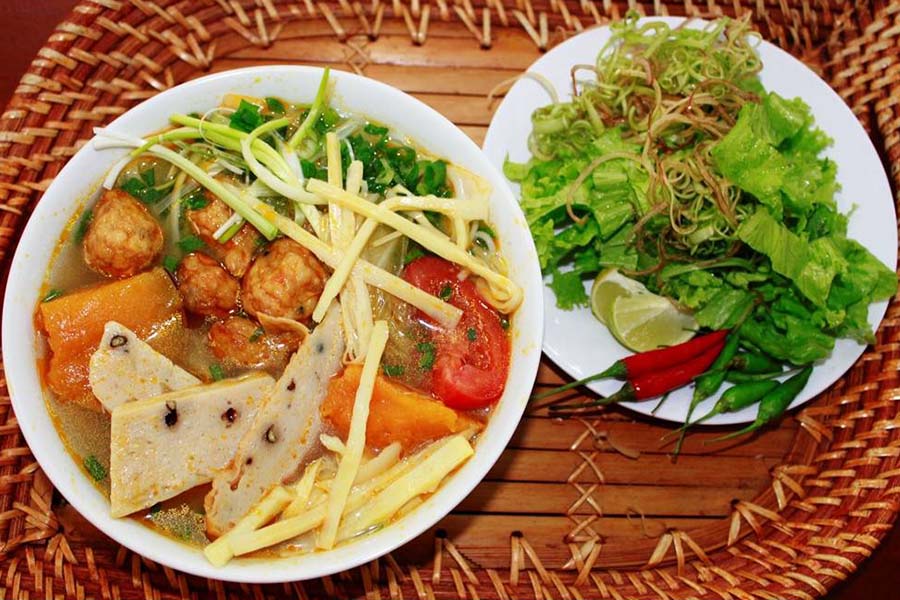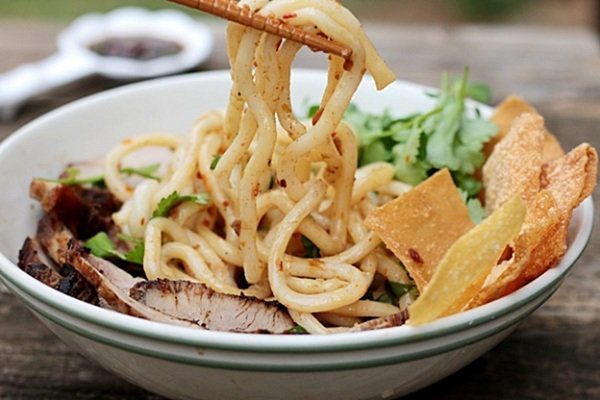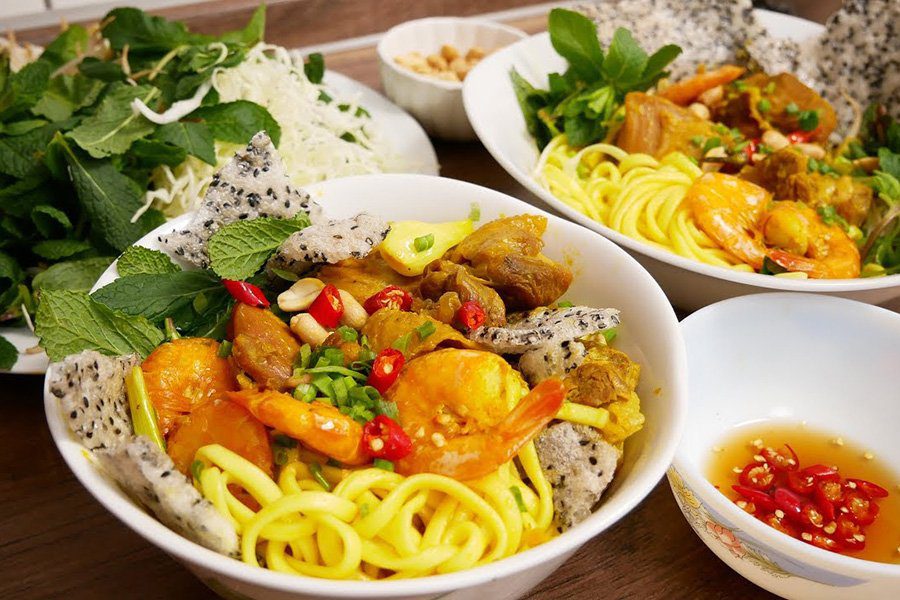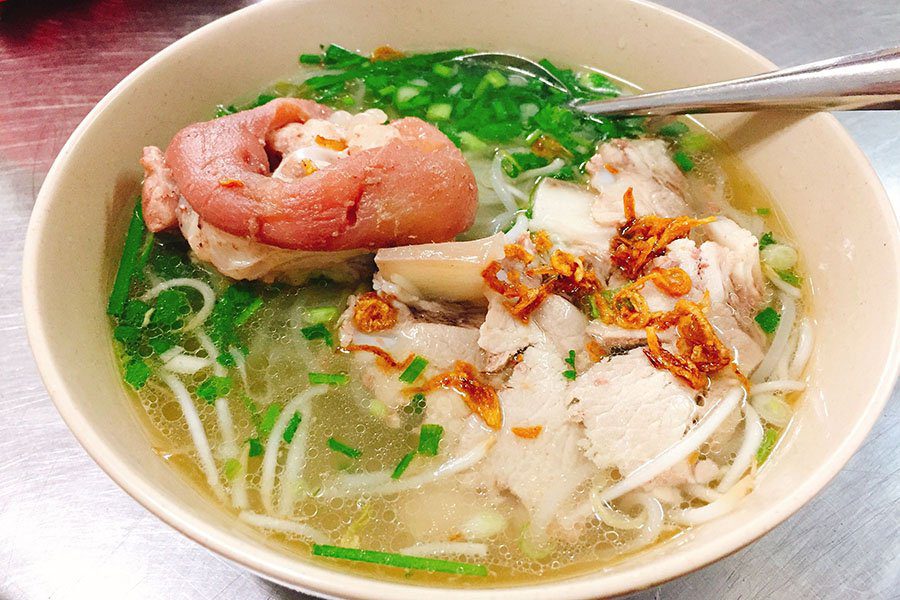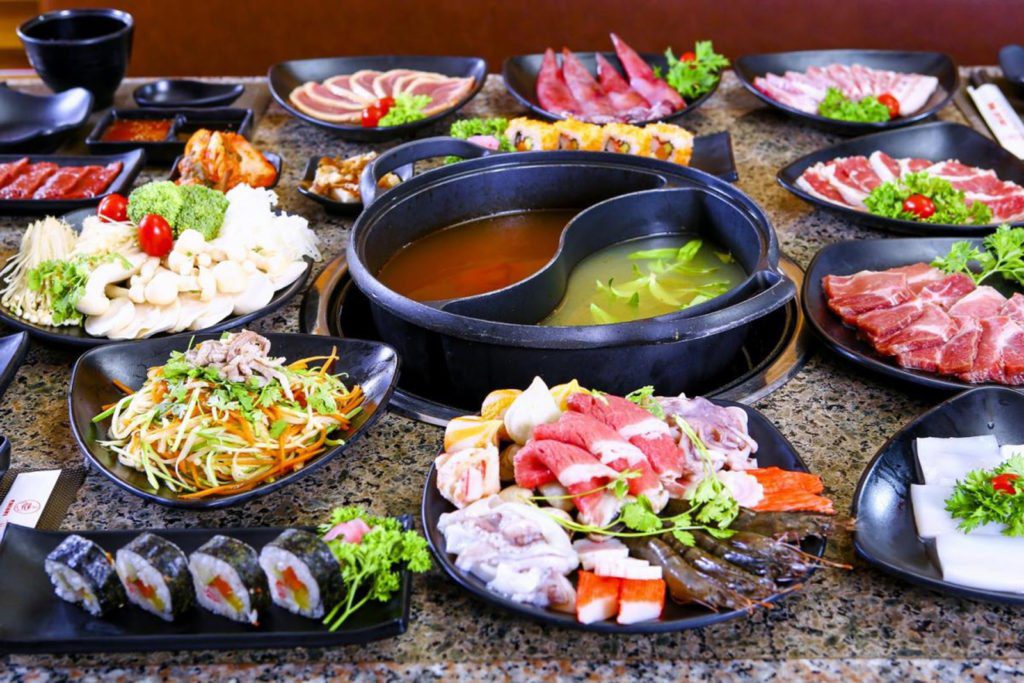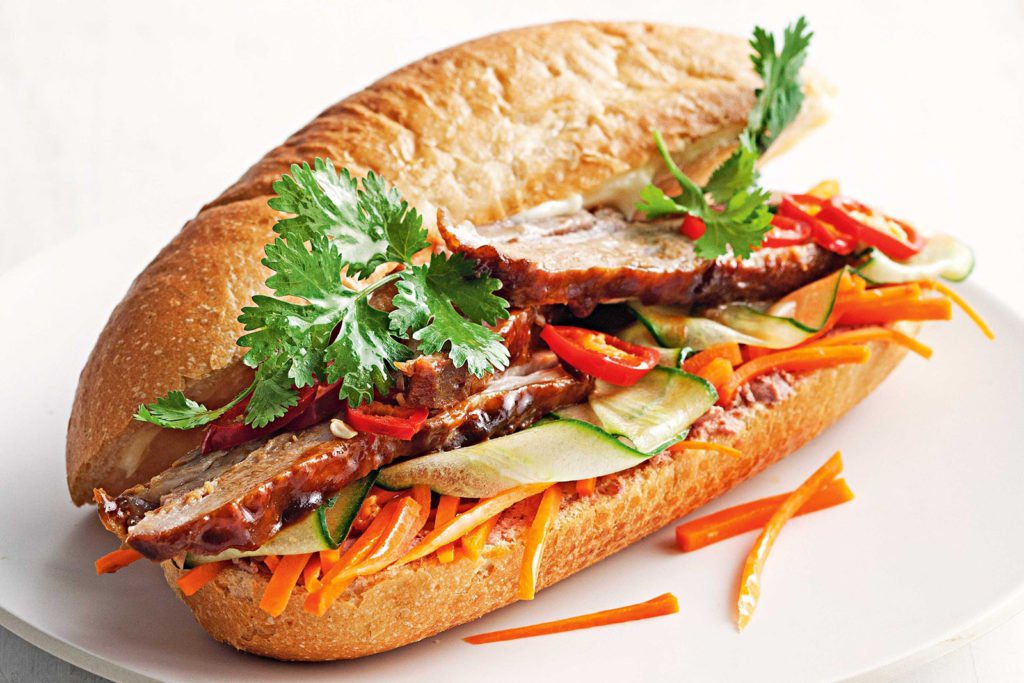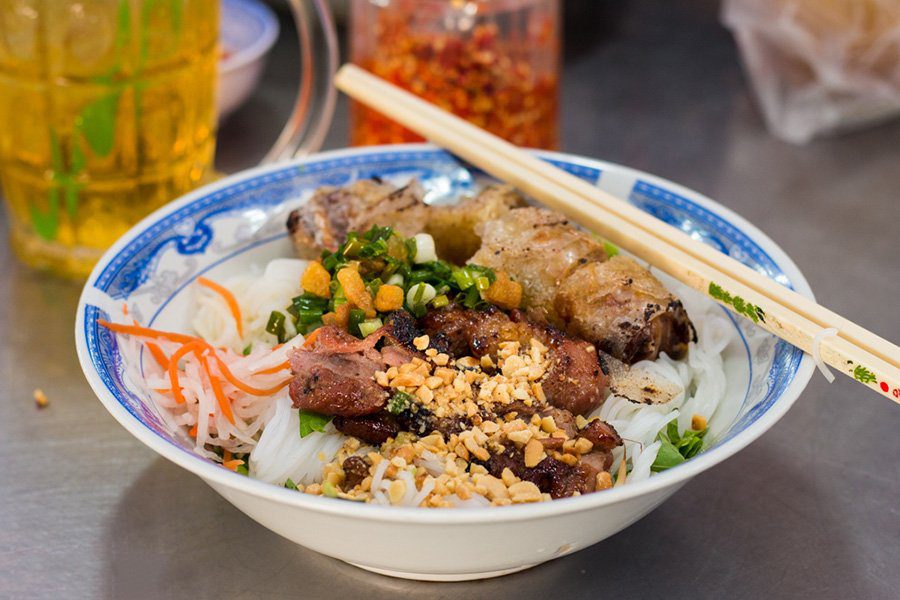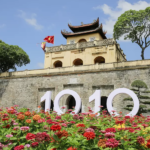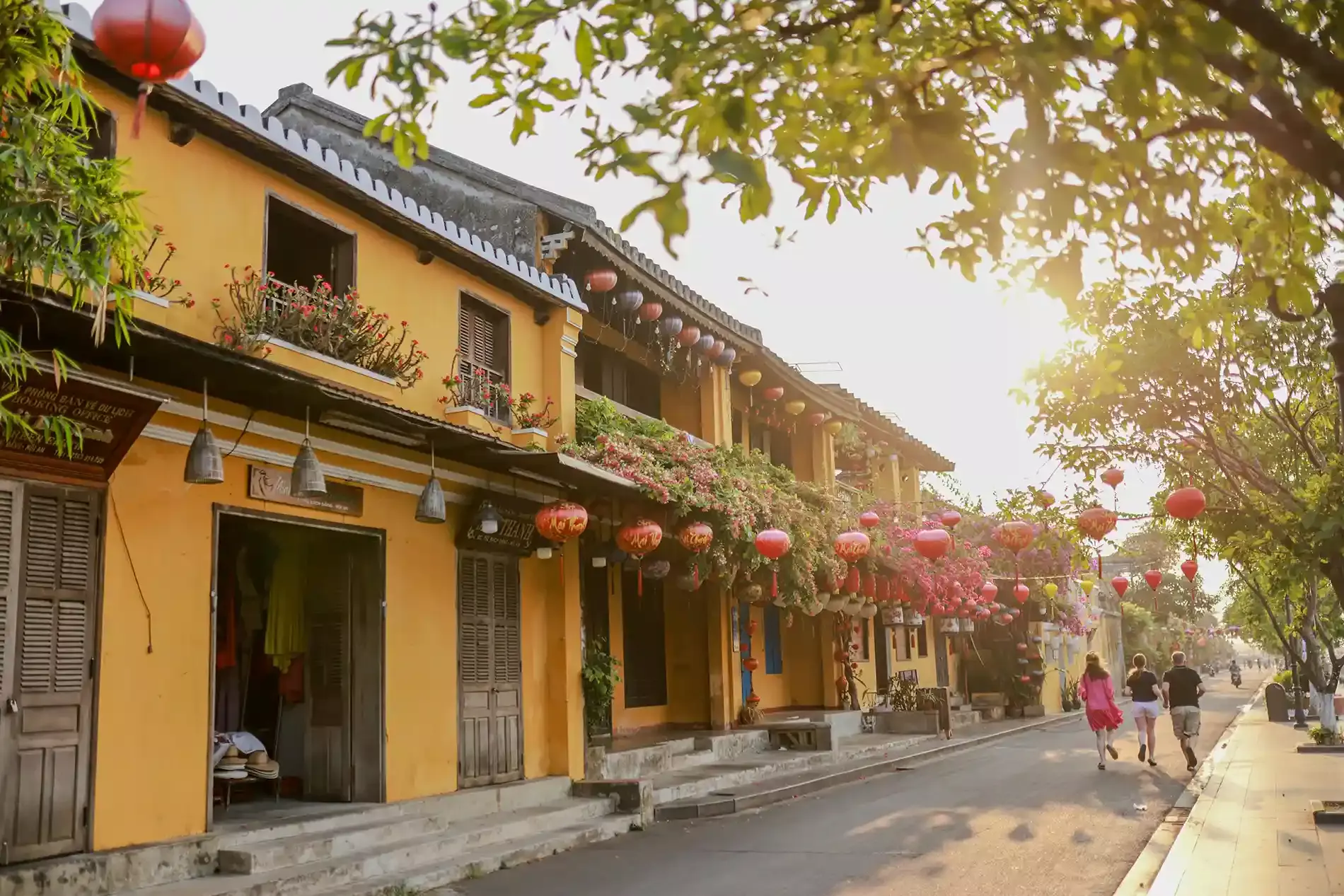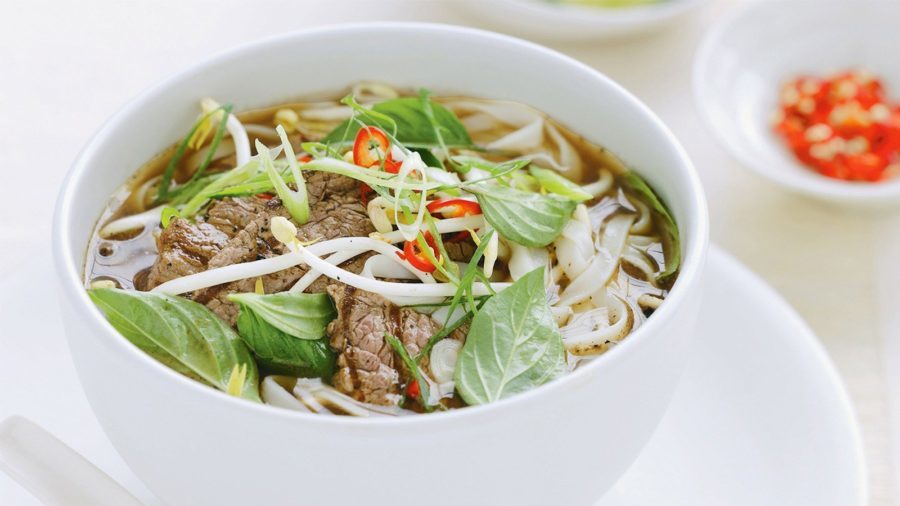
20 Vietnamese dishes you absolutely must try
Hi food lovers !
Vietnamese cuisine is known for its vibrant flavors, fresh ingredients, and a perfect balance of sweet, sour, salty, and spicy tastes. From street food stalls to traditional home-cooked meals, it offers a wide variety of dishes that are sure to delight your palate.
In this guide, we’ve compiled a list of 20 Vietnamese dishes you absolutely must try. Whether you’re planning a trip to Vietnam or exploring new flavors at home, these must-try dishes will take you on a culinary journey through one of Southeast Asia’s most beloved cuisines.
Table des matières de l'article
Typical dishes of Northern Vietnam
Northern Vietnamese cuisine primarily uses vegetables, seafood, fish (harvested from brackish waters), and meat. Most dishes are seasoned with shrimp paste diluted into a sauce. This cuisine, known for its long history and refinement, features a wide range of soups, stews, and grilled dishes.
Specialties you can find in Hanoi and the North include:
Pho – the iconic rice noodle soup
A true national dish, pho is a symbol of Vietnam recognized around the world! You simply can’t miss tasting it during your stay in Hanoi.
This soup is served in a large bowl containing pho rice noodles, meat (either beef or chicken), aromatic herbs (basil, chives, coriander), bean sprouts, and lime. All these ingredients come together in a beef bone broth that creates a rich, unforgettable, and unique flavor, typical of Vietnamese cuisine.
What is the origin of pho? Its name is said to come from the French dish “pot-au-feu,” and beef was introduced to Vietnam during the colonial period. Its exact geographic origin is believed to be in the Nam Dinh province of the Red River Delta.
More important than its history is its flavor, so don’t wait any longer to try it!
Here are our top spots to taste pho:
# Pho Bat Dan (49 Bat Dan Street)
# Pho Ly Quoc Su (10 Ly Quoc Su)
# Pho Duong Tau (3 Tran Phu, Hang Bong)
# Pho Thin (13 Lo Duc)
# Pho Ganh (4 Hang Ma)
Pho, the iconic noodle soup from Northern Vietnam
Cha ca – grilled fish on a bed of dill
Cha Ca is one of the most iconic dishes from Hanoi, beloved by both locals and travelers. This dish features succulent fish, typically Lang fish or hemibagrus, which is marinated in turmeric and then fried to golden perfection. What makes Cha Ca truly special is its unique combination of flavors and textures: the fried fish is served on a sizzling bed of fresh dill and chives, accompanied by crispy grilled rice crackers, soft rice noodles (bún), and a punchy fermented shrimp paste. To top it all off, roasted peanuts are sprinkled over the dish, adding a delightful crunch to each bite.
The richness of the turmeric-marinated fish combined with the fresh herbs and the tangy, savory shrimp paste creates a harmonious balance of flavors that’s simply unforgettable. It’s a dish that offers a perfect representation of Hanoi’s culinary creativity and history.
If you’re looking for the best place to enjoy Cha Ca, head to the street that bears its name—Cha Ca Street—where you’ll find the historic Cha Ca La Vong restaurant, located at 14 Cha Ca Street. This restaurant is famous not only for its delicious preparation of Cha Ca, but also for its legacy, as it is one of the oldest eateries in Hanoi, dating back over 100 years. In fact, the popularity of this dish was so influential that the street itself was renamed after it!
For an authentic taste of Hanoi’s food culture, a visit to Cha Ca La Vong is a must, where you can savor this culinary gem in the heart of the city.
Cha Ca, typical dish from Hanoi
Bun cha – rice noodles and grilled pork
Just like pho and cha ca, bun cha is one of Hanoi’s most iconic and unforgettable dishes. For many travelers, it’s a meal that lingers in their memory long after their visit to Vietnam’s capital.
Bun Cha is a simple yet incredibly flavorful dish, made with rice vermicelli noodles, grilled pork, and a fragrant mix of shallots and garlic. The dish is accompanied by a bowl of fish sauce, enhanced with chili, pickled green papaya, and carrots. This sweet and tangy sauce, along with a variety of fresh herbs and vegetables, complements the rich, smoky flavor of the grilled pork. The star of the dish is undoubtedly the grilled pork, typically served in two forms: juicy pork patties and tender slices of marinated pork belly.
The interplay of textures—soft noodles, crisp vegetables, and the charred exterior of the pork—makes bun cha a truly satisfying dish. It’s hearty, flavorful, and rich, but be careful not to overindulge—it’s not the lightest meal, especially with the generous servings of pork!
You can find bun cha at countless street vendors and restaurants across Hanoi, but here are some top spots to try it:
# Bun Cha Dac Kim (1 Hang Manh Street, Hoan Kiem): Known for its generous portions and rich flavor, this is a popular spot among locals and tourists alike.
# Bun Cha Huong Lien (24 Le Van Huu Street, Hai Ba Trung): Famous for hosting former President Barack Obama during his visit to Vietnam, this spot is now an iconic stop for anyone seeking authentic bun cha.
Make sure to try bun cha during your stay in Hanoi—it’s an essential part of the city’s culinary landscape!
Bun Cha, hanoian typical dish, Vietnam
Pho Cuon – Vietnamese springrolls
Pho Cuon, Hanoi, Vietnam
Xoi – the delicious sticky rice
Rice is the staple food for the Vietnamese people, and it can be prepared in many different ways. Xoi, or sticky rice, is one of them. There are various types of sticky rice: sticky rice with mung beans, turmeric-flavored sticky rice served with powdered mung beans and topped with fried shallots, sticky rice with peanuts, and many more.
Xoi is one of the favorite breakfast dishes (as you may have noticed, many dishes make great choices for breakfast!). It is most commonly sold by street vendors at markets or on the streets early in the morning, and you can also find it in restaurants serving traditional Vietnamese cuisine.
There are also a number of restaurants specializing in xoi-based dishes, where it is served with meat (usually pork or chicken). Additionally, you’ll often come across street vendors on bicycles selling it as they call out to attract customers.
Tasty and very affordable, this dish is a great choice for a modest price, ranging between 25,000 and 50,000 VND. We recommend Xoi Yen restaurant, located at 35b Nguyễn Hữu Huân Street in Hanoi.
Xoi with egf at Xoi Yen restaurant, Hanoi
Nem ran – fried spring rolls
The true Vietnamese name for what many people refer to as “nems” is Nem Ran! These crispy, golden fried rolls are a favorite in Vietnamese cuisine and are made using rice paper, which is wrapped around a delicious filling of minced pork, shrimp, and crab. The stuffing can also vary based on regional preferences, with some versions featuring chicken or a mix of seafood for a lighter touch.
Nem Ran is typically served with a side of fresh herbs, lettuce, and a dipping sauce made from nuoc mam (fish sauce), lime juice, garlic, and chili, which enhances the flavors of the rolls. The contrast between the crispy outer layer and the juicy, flavorful filling makes Nem Ran an irresistible dish that is popular at family gatherings, celebrations, and street food stalls.
These spring rolls are enjoyed as an appetizer, snack, or even a main course when paired with rice vermicelli or fresh vegetables. The versatility of Nem Ran makes it a must-try for any visitor to Vietnam!
For an authentic Nem Ran experience in Hanoi, we recommend:
# Quan An Ngon: 18 Phan Boi Chau Street, Hoan Kiem District – A well-known restaurant serving up some of the best traditional dishes, including delicious Nem Ran.
# Nem Cua Be Dac Kim: 67 Duong Thanh Street, Hoan Kiem District – Famous for its fried spring rolls with a crab-based filling, a must-try for seafood lovers.
Whether you’re strolling through Hanoi’s bustling streets or enjoying a meal in a cozy restaurant, don’t miss out on the chance to savor these crunchy and flavorful fried spring rolls!
Nem rán or nems, the iconic asian dish, Vietnam
Banh chung – the festive dish
Banh Chung is THE traditional festive cake of Vietnam, especially enjoyed during the Lunar New Year (Tết). This special dish holds a deep cultural significance and is prepared as a family, symbolizing unity and togetherness during this important celebration.
The cake is made from sticky rice and filled with a delicious combination of mung beans (also known as “green soybeans”), pork belly, and black pepper. It is wrapped in large green leaves (usually dong leaves) and boiled for hours, giving it its signature square shape and rich, flavorful taste. The sticky rice on the outside becomes soft and chewy, while the pork and beans inside provide a savory, hearty filling.
Banh Chung is a symbol of Vietnam’s agricultural roots and a tribute to the Earth, representing prosperity and the importance of the harvest. Families prepare this cake together in the days leading up to Tết, with the process often becoming a joyful communal activity.
For more on the significance of Tết and its traditions, you can explore this guide to Vietnamese Lunar New Year on Wikipedia.
For the best Banh Chung in Hanoi, you can try:
# Banh Chung Ba Kieu: 52 Hang Bai Street, Hoan Kiem District – Known for its high-quality, flavorful Banh Chung.
# Banh Chung Co Thuong: 11 Trang Thi Street, Hoan Kiem District – A famous spot offering traditional Banh Chung, perfect for experiencing the authentic flavors of this Vietnamese festive cake.
Whether you’re visiting during Tết or looking for a taste of Vietnam’s festive cuisine, Banh Chung is a must-try!
Now, let’s move on to the typical dishes of Central Vietnam. With influences from both Cham culture and the imperial court, Central Vietnamese cuisine is distinct from that of the North due to its heavy use of chili peppers, making some dishes quite spicy (even for some Vietnamese!).
Despite this, the region is renowned for having the best cuisine in the country! You’ll be the judge of that!
Typical dishes of Central Vietnam
Bun Bo Hue – Hue’s beef noodle soup
Bun Bo Hue is the iconic and popular dish of Hue! This flavorful soup is made with rice noodles (“Bun”) and beef (“Bo”).
The unique taste of the soup comes from simmering beef bones and shank with lemongrass, which gives Bun Bo Hue its distinct and dominant fragrance. But the flavors don’t stop there – a variety of condiments are added to enhance the dish: cilantro, chives, onions, banana blossom, mint, and more. Of course, chili and sugar are essential ingredients, as no dish from southern Vietnam would be complete without them! The soup also contains mam ruoc (fermented shrimp paste) and is often served with congealed pork blood for added richness.
This dish is hearty and substantial, making it a perfect meal on its own, especially for lunch. Beware, though – the Hue version is known for being particularly spicy, even more so than other regional variations!
Here are our top recommendations for enjoying Bun Bo in Hue:
# Bun Bo Ba Tuyet, 47 Nguyen Cong Chu (open from 6:00 AM to 11:00 AM)
# Quan O Phung, 5 Nguyen Du (open from 3:00 PM to 6:00 PM)
Bun Bo Hué, iconic soup from Hue
Bun Thit Nuong Hue – Grilled Meat Rice Vermicelli
Another delicious noodle dish! Unlike Bun Bo Hue, this dish is served cold and dry (without soup). If you’re not in the mood for soup, Bun Thit Nuong is the perfect alternative!
The rice vermicelli and lemongrass-grilled pork are mixed with a variety of fragrant herbs and fresh vegetables, such as carrots, daikon radish, papaya, and cucumber. The dish is then topped with crushed peanuts and fried shallots for added texture and flavor. Finally, the whole dish is drizzled with a tangy, flavorful nuoc mam sauce made with garlic and chili.
This is a popular street food in Vietnam, and you’ll likely be enticed by the irresistible aroma of grilled meat as you wander through the streets!
Here are our top recommendations for tasting Bun Thit Nuong:
# At 38 Ba Trieu
# At 130 Tran Phu
# At 179 Mai Thuc Loan
Expect to pay around 30,000 VND for a plate.
Bun Thit Nuong from Hue
Banh Beo chen – shrimp rice crackers
Banh Beo Chen are small, delicate rice cakes made from a mixture of rice flour and tapioca. On top of these soft cakes, a flavorful topping of dried shrimp and crispy pork skin is added, all mixed in a fragrant scallion oil.
These Banh Beo are bite-sized and served on small plates, often arranged on a large tray for sharing, making them a perfect, friendly appetizer for lunch or dinner. They’re light, delicious, and an excellent way to start a meal with family or friends.
Our favorite spot to enjoy Banh Beo Chen is Nha Hang Me, located at 12 Vo Thi Sau.
Banh beo chen, made from rice flour and tapioca
Banh ram-it – les dumplings de Hue
A true guilty pleasure! These dumplings are made of three delightful layers:
# The base is a crispy, fried rice cake.
# On top sits a chewy dumpling made from sticky rice, filled with mung beans, shrimp pieces, and pork belly.
# The final touch is a garnish of finely chopped onions and shrimp.
The combination of crispy and sticky textures works perfectly together, making this dish irresistible at any time of day!

Banh ram-ít from Hue
Bun cha ca – fish noodle soup
Bun cha ca from Da Nang
Cao Lau – lacquered pork noodles with herbs
This is THE signature dish that embodies the cultural fusion of Hoi An. If you only try one dish during your stay in Hoi An, make sure it’s Cao Lau.
This dish reflects the rich blend of Chinese, Japanese, and Vietnamese influences, much like the architecture of Hoi An’s Ancient Town. The noodles, for instance, resemble soba, the famous Japanese noodles, while the aromatic herbs represent both Chinese and Vietnamese culinary traditions.
The rice noodles used in Cao Lau are thicker than the “bun” or “pho” noodles commonly found in Northern Vietnam. They are served with slices of lacquered pork and a variety of fresh herbs and salad leaves. The entire dish is mixed with a light, flavorful pork broth, creating a perfect harmony of textures and flavors.
Here are our top recommendations for tasting Cao Lau:
# Cao Lau Lien (9 Thai Phien Street) – Probably the most famous restaurant that serves only Cao Lau. The owner’s recipe remains a well-kept secret, though it’s known that only organic ingredients from Tra Que village are used. Don’t hesitate to try it!
# Cao Lau Thanh (6 Thai Phien Street)
# Cao Lau Hoi An Trung Bac (87 Tran Phu Street)
# Cao Lau Không Gian Xanh (687 Hai Ba Trung Street)
Expect to pay around 40,000 to 50,000 VND for a plate of Cao Lau.
Cao Lau, from Hoi An
Mi Quang – wide yellow rice noodles
Mi Quang is a typical noodle dish from the provinces of Quang Nam and Quang Ngai in Central Vietnam. It is often enjoyed as a breakfast dish.
This noodle soup features wide, yellow or white rice noodles, accompanied by either meat (pork, beef, or chicken), shrimp, and a crispy rice cracker. All of this is served in a light pork broth, just enough to coat the noodles without overwhelming them.
To achieve its unique and distinct flavor, no less than 9 aromatic herbs and ingredients are used: basil, cilantro, Vietnamese coriander, young spinach leaves, baby lettuce, bean sprouts, scallions, banana flower, and onions.
Vietnamese people often spice it up by adding green chili for an extra kick – definitely worth trying! Some also sprinkle crushed peanuts and fried shallots on top for added crunch and flavor.
Here are our top recommendations for tasting Mi Quang:
# Mr. Hai’s Mi Quang in Hoi An (6A Truong Minh Luong Street)
# Mrs. Hat’s Mi Quang (4 Phan Chau Trinh Street)
# Mrs. Minh’s Mi Quang (Cam Ha, Hoi An)
The price of this dish ranges from 25,000 to 50,000 VND (approximately 1 to 2 euros).
My Quang, iconic dish from Hoi An
Now, let’s turn to the cuisine of Southern Vietnam, which has been heavily influenced by Chinese, Khmer, and Thai cooking. It is typically characterized by the use of sugar and coconut milk. You’ll also find plenty of seafood, sourced from the open waters, along with dried fish used in both dishes and sauces. Here are a few dishes you’ll definitely want to try !
Typical dishes of South Vietnam
Hu Tieu – the Saigon soup
This soup is believed to have Chinese and Cambodian origins but gained fame primarily in Southern Vietnam. Hu Tieu has become the signature soup of Saigon, much like Pho is for Hanoi.
Served in a large bowl, Hu Tieu consists of a clear broth made from pork bones, rice noodles, pork meat, shrimp, and quail eggs. Similar to Pho, Hu Tieu refers to the specific type of rice noodle used in this Southern Vietnamese dish. The rice, naturally, comes from the Mekong Delta, and the rice noodles are thinner compared to those in Pho. As with Pho, spices and condiments play an essential role in the recipe, but for Hu Tieu, the defining touch is the addition of sweetness, a must for it to be embraced by the people of Southern Vietnam!
Here are the recommended places to try Hu Tieu:
# Hu Tieu Go Pham Van Hai: 154/56 Pham Van Hai, Tan Binh District
# Hu Tieu Go 18: 18 Ly Thai To, District 3
# Hu Tieu Xua: 476 Le Quang Dinh, Binh Thanh District
Expect to pay around 30,000 VND (1.20 euros) for a bowl of Hu Tieu.
Hu Tieu soup from Saigon
Ta Pin Lu – the Southern Vietnamese hotspot
Ta Pin Lu is the beloved hotpot of Southern Vietnam! In Northern Vietnam, this dish is known as lẩu, but in the South, it has its own name and twist. This dish is a favorite among Vietnamese people, especially when dining out in groups, as it’s the perfect meal for sharing and socializing. Unlike the Western-style cheese fondue, the Vietnamese version involves a flavorful broth and a variety of fresh ingredients that are cooked right at the table.
To prepare Ta Pin Lu, the key is in the broth, which is simmered to develop a rich base for the ingredients. The broth is often infused with ginger, garlic, and lemongrass, giving it a fragrant and slightly spicy aroma. Once the broth is ready, diners can add a wide assortment of ingredients: slices of tender beef, chicken, succulent scallops, shrimp, and an array of vegetables such as carrots, bok choy, and leafy greens. Rice vermicelli noodles are also added to soak up the flavors of the broth.
The fun of Ta Pin Lu comes from the interactive experience of cooking the ingredients at the table. With chopsticks in hand, everyone dips the raw ingredients into the hotpot, waits for them to cook, and then enjoys the flavorful combination of meats, seafood, and vegetables. The meal is typically accompanied by a variety of dipping sauces, such as soy sauce, fish sauce, or chili paste, to enhance the taste of each bite.
Ta Pin Lu is not only about the food but also about the experience – it’s a social meal where friends and family gather around the bubbling hotpot, sharing stories, laughter, and delicious bites. This hotpot is a true reflection of the warmth and communal spirit of Vietnamese cuisine.
So, grab your chopsticks and get ready for a culinary adventure with Ta Pin Lu!
Ta pin lu, the hotspot from South Vietnam
Banh xeo – the Southern Vietnamese pancake
Banh Xeo is a beloved crispy pancake from Southern Vietnam, filled with a delicious combination of ingredients. The name “Banh Xeo” refers to the sizzling sound it makes when the batter hits the hot pan. This savory pancake is stuffed with a variety of fillings, typically including slices of pork, shrimp, onions, bean sprouts, and mushrooms.
When served, Banh Xeo is enjoyed with an assortment of fresh herbs and greens, such as lettuce, mint, and cilantro. To fully appreciate its flavor, you wrap a piece of the crispy pancake with these herbs in lettuce leaves, creating a delightful bundle of textures and tastes. The final touch is dipping it in the iconic Vietnamese dipping sauce made from nuoc mam (fish sauce), sugar, lime juice, and a hint of chili. This sauce provides the perfect balance of sweet, salty, sour, and spicy that elevates the dish.
Banh Xeo is not just a meal, it’s an experience. The pancake is crispy on the outside, but soft and flavorful inside, with the combination of meats, seafood, and fresh vegetables coming together harmoniously. The freshness of the herbs and the crunch of the pancake create a contrast that makes each bite incredibly satisfying.
It’s a popular street food, but also enjoyed in many casual restaurants. Whether you’re grabbing it as a quick snack or sitting down with friends to share a plate, Banh Xeo is a must-try when exploring Southern Vietnamese cuisine.
Here are our top recommendations for tasting Banh Xeo:
# Quan Muoi Xiem: 54 Nguyen Van Troi, Phu Nhuan District
# Quan 46A: Dinh Cong Trang, District 1
# Quan Thanh Phuong: 31 Hoang Hoa Tham, Tan Binh District
Expect to pay around 50,000 VND (approximately 1.90 euros) for a plate of Banh Xeo.
Bánh xèo, the vietnamese salted pancake
Banh mi – the Vietnamese sandwich
The iconic Banh Mi, Vietnam’s beloved sandwich, can be found on virtually every street corner in Saigon and beyond!
This delicious sandwich is made with a crispy baguette, typically using wheat flour, a legacy from the French colonial period. It’s filled with a variety of flavorful ingredients such as pork meatballs, roasted pork, Vietnamese pâté, cilantro, pickled carrots, cucumber, mayonnaise, and a hint of chili for those who like it spicy. The beauty of Banh Mi lies in its versatility – each vendor has their own secret recipe, which makes every sandwich unique and full of surprises.
A true street food classic, Banh Mi is one of the favorite dishes of travelers in Vietnam. It’s the perfect combination of crunchy bread, savory fillings, and fresh herbs, making it an irresistible snack or meal on the go. The contrast between the tender meats, fresh vegetables, and crisp baguette creates a symphony of flavors and textures in every bite.
While Banh Mi is enjoyed across the country, the best versions are often found in bustling Saigon. Whether you’re looking for a quick bite between exploring the city’s streets or a tasty meal to start your day, Banh Mi is a must-try.
Here are our top recommendations for grabbing a Banh Mi in Saigon:
# Banh Mi Huynh Hoa: 29 Le Thi Rieng, District 1
# Banh Mi Saigon: 165 Cong Quynh, District 1
# Banh Mi Co Diep: 238 Vo Thanh Trang, Tan Binh District
Expect to pay around 20,000 VND (approximately 90 cents) for a Banh Mi.
Banh mi, the iconic sandwich from South Vietnam
Bun Thit Nuong – grilled pork with rice noodles
Bun Thit Nuong is a hearty and flavorful dish that’s a true staple in Saigon! It features fresh rice noodles topped with grilled pork, which is marinated and cooked to perfection over a barbecue. The dish is then loaded with fresh lettuce, cilantro, cucumber slices, bean sprouts, pickled carrots, basil, peanuts, and mint, creating a vibrant and aromatic mix of ingredients.
The secret to making Bun Thit Nuong truly irresistible is the iconic Vietnamese fish sauce-based dressing (nuoc mam). This sauce, made from a blend of fish sauce, sugar, lime juice, and garlic, adds a sweet, tangy, and savory element that ties all the flavors together. Pour it generously over the dish, and you’re in for a real treat!
Bun Thit Nuong is a perfect representation of Southern Vietnamese cuisine – fresh, light, and bursting with contrasting flavors and textures. The combination of smoky grilled pork, crunchy peanuts, and fragrant herbs, all mingling with the cool rice noodles, makes for a satisfying meal that can be enjoyed at any time of day.
Here are our top recommendations for enjoying Bun Thit Nuong in Saigon:
# Chi Thong: 195 Co Giang, District 1
# Bun Thit Nuong Hai Dang: 145 Chan Hung, Tan Binh District
# Bun Thit Nuong Co Ba: 287/67 Nguyen Dinh Chieu, District 3
Expect to pay around 40,000 VND (approximately 1.70 euros) for a serving of Bun Thit Nuong.
Bun Thi Nuong, dish from Saigon, Vietnam
Che – the Vietnamese dessert
Let’s end this list on a sweet note with Che! This beloved Vietnamese dessert is a delightful blend of flavors and textures, made from a variety of ingredients such as white beans, corn, and even sweet potatoes. All of these ingredients are generously topped with rich and creamy coconut milk, adding a sweet and smooth finish to the dish.
Che comes in many variations, with each region of Vietnam putting its own twist on the dessert. However, it is especially popular in Southern Vietnam, where you can find it served by street vendors and in dessert shops alike. Whether served warm or chilled, Che offers a refreshing and satisfying end to any meal.
With its combination of unique ingredients, Che provides a perfect balance of sweet, creamy, and earthy flavors, making it a favorite among locals and travelers alike. It’s not only a treat for the taste buds but also a glimpse into the diverse and inventive nature of Vietnamese cuisine.
You’ll find Che almost everywhere in Southern Vietnam, and even in other parts of the country!
Expect to pay a modest price for a serving of Che, making it a delicious and affordable dessert option.
Chee, dessert typique du Vietnam
Now you know the must-try dishes to savor during your trip to Vietnam.
Feeling inspired to travel and taste these amazing dishes? Contact us!
